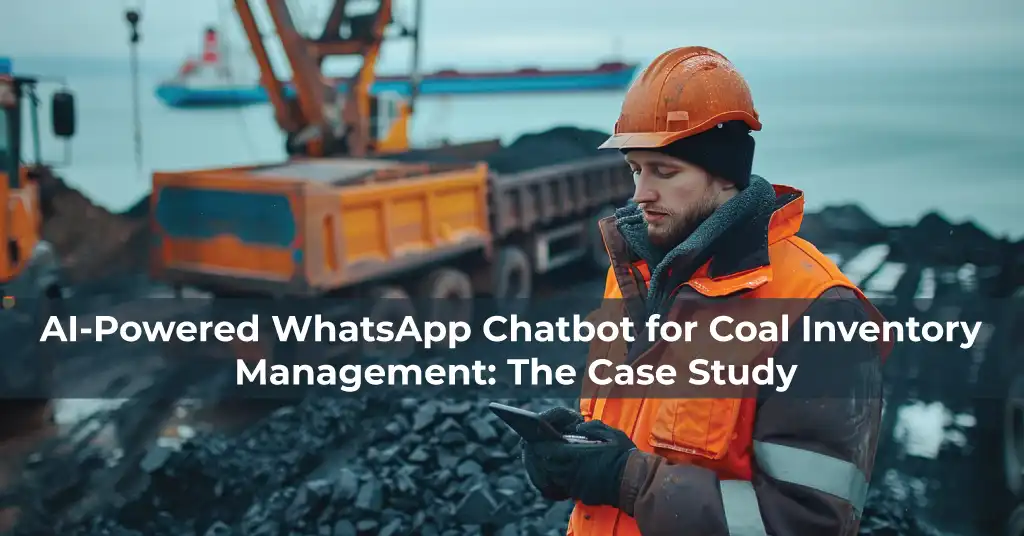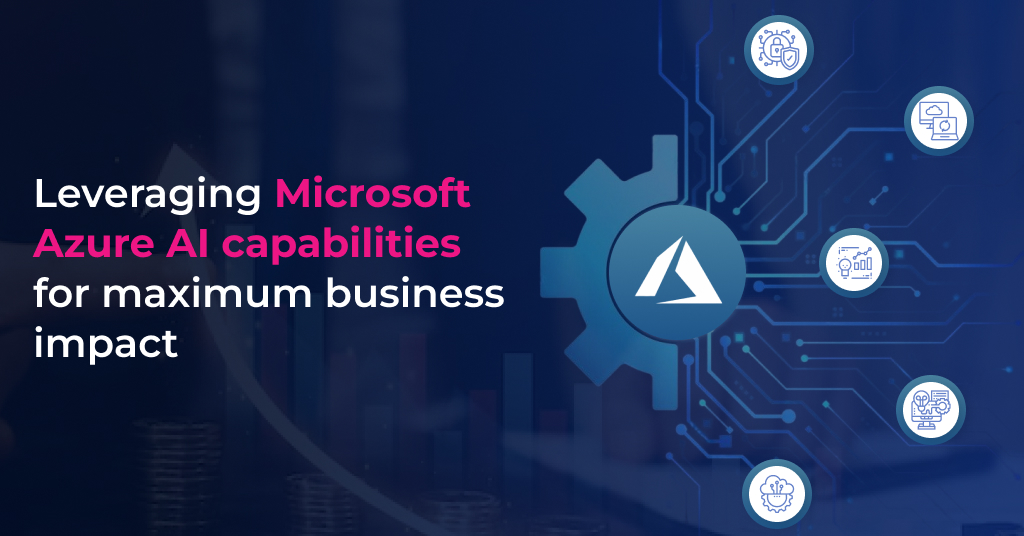AI is a powerful tool that can help businesses make a difference and achieve what was hard to achieve before!
What sets AI apart is its remarkable ability to seamlessly integrate into various applications.
From powering complex Cloud computing systems to enhancing everyday platforms like WhatsApp with AI Chatbot integration.
However, the challenge lies in the identification of the areas where this tool can be used in a way that one can reap maximum benefits.
As it is said, we all have potential, but only a few utilize it at the right place and at the right time – and when a challenging project came along, a similar situation was there in front of us.
Our team has always been ready to harness the power of AI to tackle real-world challenges and when a Coal Trading Company in Indonesia needed a solution to efficiently manage their coal inventory and warehouses, we rose to the challenge.
They needed something fast, reliable, and cost-effective to track shipments and communicate with local workers and suppliers.
Our solution? We integrated an AI-powered chatbot into WhatsApp, the region’s go-to messaging app.
This chatbot, armed with advanced natural language processing and machine learning, facilitated seamless interactions with stakeholders. It provided real-time updates on shipments and effortlessly handled orders and invoices.
The results were nothing short of transformative. Not only did our implementation address the company’s immediate needs, but it also significantly boosted operational efficiency.
If you’re curious about how a seemingly small solution can tackle such big issues, join us as we dive into a fascinating case study that showcases the impact of AI in real-world scenarios.
The Case Study
Implementation of AI-powered Chatbot in WhatsApp for Coal Inventory Management
- Industry – Mining
- Client – Coal Traders
- Region – Port in Indonesia
Overview –
- A Coal Trading Company operating at a bustling port faced significant challenges in efficiently managing their fleet of coal-carrying trucks.
- The process involved trucks arriving, getting loaded based on requirements, and departing, making tracking and monitoring a complex task.
- Compounding the issue, the port section was managed by local workers with limited access to efficient systems and infrastructure.
- This lack of proper tracking systems and centralized management led to difficulties in monitoring coal shipments, resulting in potential theft and operational inefficiencies.
The Problem –
- The primary challenge was the inability to effectively track and control coal shipments, leading to the risk of theft and mismanagement.
- Local workers, lacking the expertise to operate sophisticated systems, struggled to manage operations efficiently.
- Moreover, the absence of proper infrastructure and training compounded the issue, making it challenging to establish a reliable tracking system.
- Information sharing via WhatsApp further exacerbated the problem, leading to disorganization and bottlenecks in stock management.
Our Solution –
- To address these challenges, our team developed a bespoke solution leveraging WhatsApp and Artificial Intelligence (AI).
- We developed a WhatsApp AI Chatbot – an AI chatbot integrated into WhatsApp, developed and designed in a way to track and analyze daily activities manually input by workers.
- This chatbot facilitated seamless communication and monitoring of inventory and fleet management, reducing the risk of mismanagement among local staff.
- By utilizing the user-friendly WhatsApp platform, we minimized technical overhead and ensured widespread adoption.
- The implementation of the Chatbot in WhatsApp allowed for the sharing of crucial information such as delivery order details, images of delivery tokens, along with weighment slips, streamlining operations and enhancing efficiency.
Summary –
- Business Problem – Coal theft and operational inefficiencies at the port.
- Operational Challenges – Uneducated staff, network limitations, lack of centralized tracking system.
- Solution – Integration of an AI chatbot tailored for local worker needs.
- Developed/Implemented Features – WhatsApp chatbot for streamlined communication and information sharing, including delivery details, images, and weighment slips.
- Result – The AI-powered chatbot running on the WhatsApp platform revolutionized operations, providing stakeholders with a user-friendly interface without changing the platform they were using, thus providing access to critical information, facilitating efficient decision-making, and enhancing overall productivity.
Key Takeaways –
- The integration of AI into WhatsApp addressed challenges associated with coal theft and operational inefficiencies.
- Leveraging the simplicity of WhatsApp minimized technical hurdles and ensured widespread adoption among local workers.
- Automated features such as QR codes further optimized operations, facilitating seamless communication and information exchange.
What did we learn from this WhatsApp AI Chatbot Integration project?
In our experience as a bespoke development company, every project brings its own set of challenges. However, this one stood out due to its unique requirement of finding a solution within existing limitations.
The primary challenge we faced was the lack of infrastructure and a workforce that wasn’t well-versed in handling complex software. Instead of starting from scratch, we had to work with what was already in place.
But, amidst these challenges we identified a glimmer of hope – The Proficiency of the Workforce in using WhatsApp!
Recognizing this, we decided to capitalize on this familiarity and integrate AI functionalities into the platform.
By combining the simplicity of WhatsApp with the power of AI, we developed a solution that was user-friendly and required minimal training for the workforce to adapt to.
This not only addressed the immediate need for efficient communication and tracking but also laid the foundation for future innovation and technological advancements within the company.
What you can learn from this?
Finding solutions to complex problems doesn’t always require investing in expensive infrastructure and complex solutions that your team may struggle to adopt effectively.
Technology should aim to solve problems, not create bigger ones!
Even for the most complex challenges, simple yet effective solutions can be developed. The key is to connect with a development team with similar experiences who can suggest viable options.
Sometimes, having a solution is all that’s needed, but it’s important to consider the potential costs involved!
Through thorough analysis, discussion, and proper technological evaluation, a solution that fits perfectly your business challenges can be developed!







